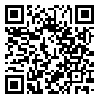Volume 15, Issue 3 (May & Jun 2024)
BCN 2024, 15(3): 421-432 |
Back to browse issues page
Fariba Yadolahi1 

 , Mohammad Mohsen Roostayi *2
, Mohammad Mohsen Roostayi *2 

 , Minoo Khalkhali Zavieh2
, Minoo Khalkhali Zavieh2 

 , Abas Rahimi1
, Abas Rahimi1 

 , Masoud Mehrpour3
, Masoud Mehrpour3 

 , Alireza Akbarzadeh Baghban4
, Alireza Akbarzadeh Baghban4 




 , Mohammad Mohsen Roostayi *2
, Mohammad Mohsen Roostayi *2 

 , Minoo Khalkhali Zavieh2
, Minoo Khalkhali Zavieh2 

 , Abas Rahimi1
, Abas Rahimi1 

 , Masoud Mehrpour3
, Masoud Mehrpour3 

 , Alireza Akbarzadeh Baghban4
, Alireza Akbarzadeh Baghban4 


1- Department of Physiotherapy, Physiotherapy Research Center, School of Rehabilitation, Shahid Beheshti University of Medical Sciences, Tehran, Iran.
2- Department of Physical Therapy, School of Rehabilitation Sciences, Shahid Beheshti University of Medical Sciences, Tehran, Iran.
3- Department of Neurology, Faculty of Medicine, Iran University of Medical Sciences, Tehran, Iran.
4- Department of Basic Sciences, Roteomics Research Center, School of Rehabilitation Sciences, Shahid Beheshti University of Medical Sciences, Tehran, Iran.
2- Department of Physical Therapy, School of Rehabilitation Sciences, Shahid Beheshti University of Medical Sciences, Tehran, Iran.
3- Department of Neurology, Faculty of Medicine, Iran University of Medical Sciences, Tehran, Iran.
4- Department of Basic Sciences, Roteomics Research Center, School of Rehabilitation Sciences, Shahid Beheshti University of Medical Sciences, Tehran, Iran.
Abstract:
Introduction: Stroke is one of the most debilitating diseases among adults worldwide and leads to persistent rehabilitation needs even at the chronic stage. Achieving good postural control is a critical requirement for daily activities which enhances quality of life (QoL) in patients with stroke. There is increasing evidence that transcranial direct current stimulation (tDCS) can be considered a promising adjunct technique to improve motor recovery after stroke. Evidence of augmented neuroplasticity after tDCS suggests that paired rehabilitation followed by consecutive use of tDCS may optimize recovery outcomes. Although a few randomized controlled trials have been conducted on upper limb rehabilitation in chronic stroke using tDCS, no study focused on balance training in chronic stroke patients. The present randomized, sham-controlled, double-blinded clinical study addresses brain stimulation targeting postural control using tDCS in chronic stroke.
Methods: The study participants included chronic ischemic stroke individuals with postural control impairments who passed the exclusion criteria. Active or sham anodal tDCS was delivered to the lesioned leg motor cortex combined with balance training. The experimental group received active anodal tDCS stimulation (2 mA) for 20 min, daily for 5 days paired with balance training. Linear and nonlinear approaches were used to analyze postural sway changes pre-and post-intervention. Postural sway fluctuation, functional balance assessment using the Berg balance scale, and timed up-and-go test were conducted to compare the active and sham groups.
Conclusion: This trial could have significant implications for balance rehabilitation after stroke in the ambulatory setting. If effective, this novel approach may improve rehabilitation protocol in this population.
Methods: The study participants included chronic ischemic stroke individuals with postural control impairments who passed the exclusion criteria. Active or sham anodal tDCS was delivered to the lesioned leg motor cortex combined with balance training. The experimental group received active anodal tDCS stimulation (2 mA) for 20 min, daily for 5 days paired with balance training. Linear and nonlinear approaches were used to analyze postural sway changes pre-and post-intervention. Postural sway fluctuation, functional balance assessment using the Berg balance scale, and timed up-and-go test were conducted to compare the active and sham groups.
Conclusion: This trial could have significant implications for balance rehabilitation after stroke in the ambulatory setting. If effective, this novel approach may improve rehabilitation protocol in this population.
Keywords: Transcranial direct current stimulation (tDCS), Chronic stroke, Motor cortex, Postural control, Complexity, Multiscale entropy
Type of Study: Methodological Notes |
Subject:
Cognitive Neuroscience
Received: 2019/04/6 | Accepted: 2020/05/9 | Published: 2024/05/1
Received: 2019/04/6 | Accepted: 2020/05/9 | Published: 2024/05/1
| Rights and permissions | |
 |
This work is licensed under a Creative Commons Attribution-NonCommercial 4.0 International License. |


